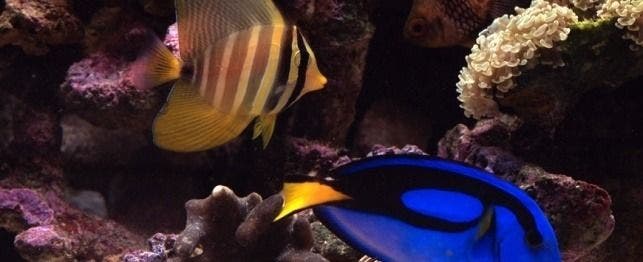
Keeping Your Tank Warm
Fish may be known as cold-blooded creatures, but the truth is that they are more sensitive to changes in temperature than you are. When the temperature outside changes, birds and mammals make adjustments in their metabolism to keep their bodies from freezing or overheating.
Most fish and reptiles have little they can do to keep their body temperatures regulated except move from sun to shade, from hot surface waters to cool deep waters. In the aquarium, however, they have no place to go and so the regulation of your fishes’ body temperatures is up to you.
Luckily, since most of your fish will come from tropical waters, their temperature requirements are pretty much the same. Yes, there are exceptions. Goldfish, for instance, can survive in ponds that nearly freeze over in the winter. But for the most part, your job is to keep the temperature of your tank somewhere between 72 and 80 degrees Fahrenheit, day and night, summer and winter.
Unless you live where that’s the temperature year round you will need some way to maintain the tank’s water temperature. If you live in a cold climate with poor heating, then warming the tank is your concern. Here, we’re focused on heating your tank.
Submersible vs. Submerged
There are two basic kinds of aquarium heaters. The first is a glass test tube filled with a heating coil and capped with a regulator. The cap attaches to the top edge of the aquarium with a set screw and the test tube is immersed into the water. Turn the dial and the heating element glows. The water heats up. The other kind of heater is a submersible heater that lies on the bottom of the tank. With either one, the trick is to set them so the water temperature reaches and stays where you want it. What wattage heater you need will depend upon the size of the tank. The usual rule is if the room is 8 to 10 degrees cooler than what you want the water to be, then 2.5 watts per gallon is necessary. More than that, 5 watts per gallon.
Thermometers
Since neither of these heaters actually gives you the temperature of the water you need a thermometer. Either a bulb thermometer that hangs in the water, or a little flat LCD thermometer that sticks to the outside of the tank. Both can be very inaccurate. Or worse, after working well for a time, suddenly become inaccurate. To avoid trouble, the best thing to do is to calibrate your thermometer against one you know to be accurate. Aquarists have tried every thermometer possible from meat thermometers to electronic indoor-outdoor thermometers. One that works for you is what you need.
Maintaining the Right Temperature
While most fish can stand gradual temperature changes within a few degrees, too many changes, or too sudden changes can stress them a great deal. Water chemistry, from effects of ammonia to pH, is also affected by temperature. For example, warm water holds less dissolved oxygen than cold water. The best advice is to get the temperature adjusted before adding fish to your tank – over the same few days that you allow for your biological filter and your water to stabilize. See how much the temperature changes between day and night, especially if you lower your heat or adjust your air conditioning at night. A room facing south, especially one with a lot of windows, can become quite warm on a sunny afternoon. Sunlight striking the tank, especially a small tank, can heat the water several degrees. So can an incandescent tank light.
To make certain the water is the same temperature throughout the tank, good water circulation is important. Your filter is moving water, but a good airstone will help substantially.
Also make sure to account for water evaporation. If the water level drops too much and your heaters are continuing to work, the water will overheat. Bulb heaters exposed to air can also break so be certain the bulb remains submerged.
Finally, when making water changes, be certain the water you add to the tank is the same temperature as the water in the tank.